Mise-en-Abyme: the Proto-Cemetery
Final review of Federico Ruberto’s design studio “Mise-en-Abyme: Proto-Cemetery”, part of Core-Studio-II, Singapore University of Technology and Design.
Federico Ruberto: “Students were asked to design a “ritual”, the passage through, the crossing, the profanation that marks the establishment of the norm, the constitution of a conceptual/physical “threshold”, that living-limit that is usually referred to as the moment of “death”, the instant any-thing become less/or-and/more than a thing. The rituals of passage […] how to render it in narrative and images, how to design its physical/virtual/(augmented) spatialities? They were asked to define the architectonic, the diagrammatic unfolding of the a ritual, and to translate such architectural apparatus in a game-like environment through the use of Unreal Engine.
What ritual of passage is relevant to the future? It doesn’t necessarily need to be the ritual celebrating the death of a person —the feral celebration of the body’s soulless/stillness after entropy has taken over its “life”, its drives— it could be, it’d better be, the commemoration of a concept that died or that is in the processes of dying. It could be a ritual of death/change of one or many of the several latent selves embodied within the transparent model of what we call “our self”, trapped in the physicality of what a given body. The students were left free to design their rituals.
But first: the “site” requires a conceptual emplacement, thus students were asked to define a future, crafted as a short narrative by each of them in order to represent a particular twist of history due to the transformation of the actual mnemotechnical apparatus, the apparatus of capture, of “exteriorisation”, of “supplementation”. (As in science-fiction) I asked them: select few techo-bio/logical elements of reality and carry forward a textual exploration of different sources, mesh them, till a point at which a new reality starts to emerge. Second, defines the (proto-)cemetery’s materiality, design the space that for some reasons is still a “place”, it’s an archive first and foremost of signs, besides being still (for some) an archive of bodies. For the students to decide: what is/are the space-time of memory, what are the rituals held in such archive? How do you represent memory, the memory of a smell, the remembrance of stolen gaze of desire, the spectral absence of what once was an intersubjective presence (that of a community)? How to commemorate a dead concept?
But also, …who/where are the archons of the archive given the future of hyper digitalisation/computation? The ritual must celebrate the before/after. It’s a mise-en-scene of a space-time in and beyond the physical causality of the now. It is also its Janus face, its twin, its a mise-en-abyme, as it reminds all the pasts and futures that are lost and that are wandering in limbo.
…What bio-politics is engraved in such archive? What language? What imago, magic, what phantasmagoria haunts the archive, what spectre haunts its present in the form of future(s) (Derrida-Stiegler-Fisher)?
[*I hope that as opening sequence for their final presentation, at least one of them will develop further Blanchot’s line from “The Work of Fire”: “Why not withdraw into an enclosed and secret intimacy without producing anything but an empty object and a dying echo?” (p.306).]”
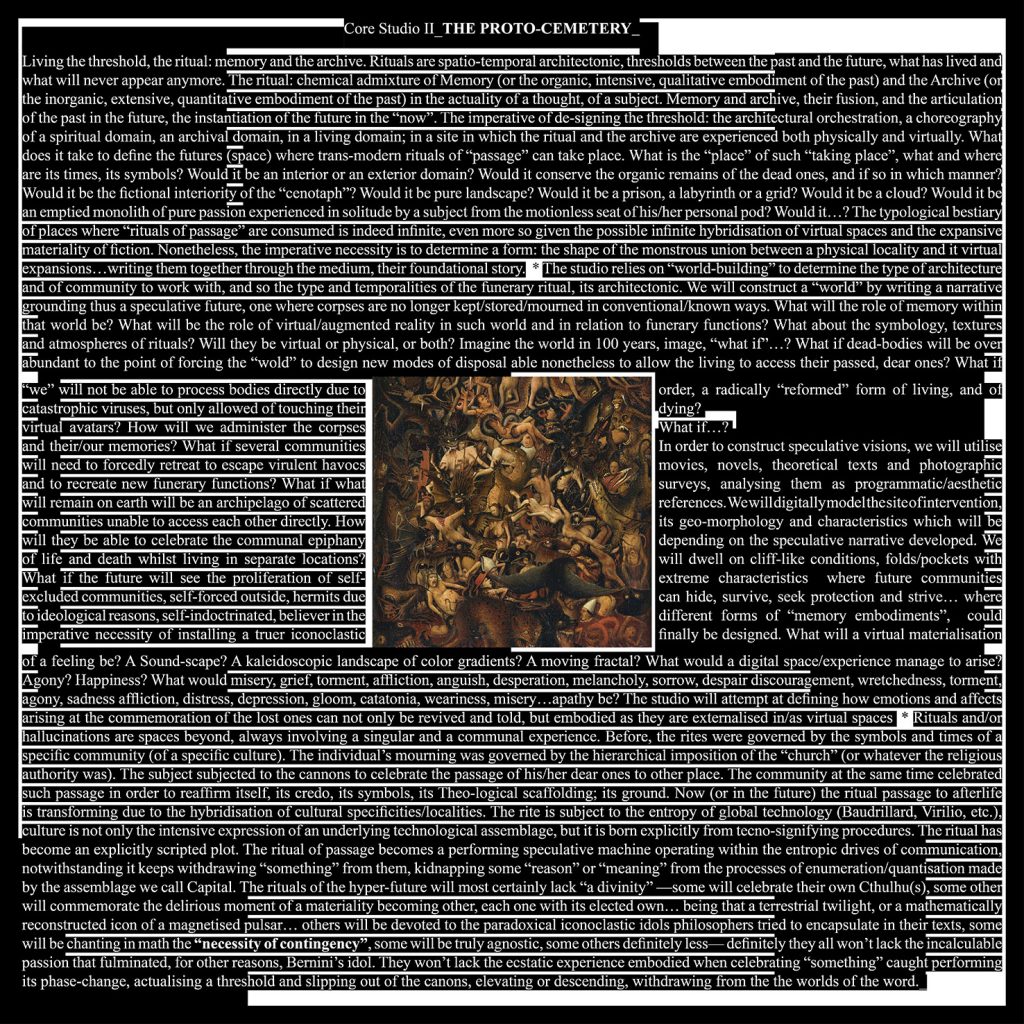
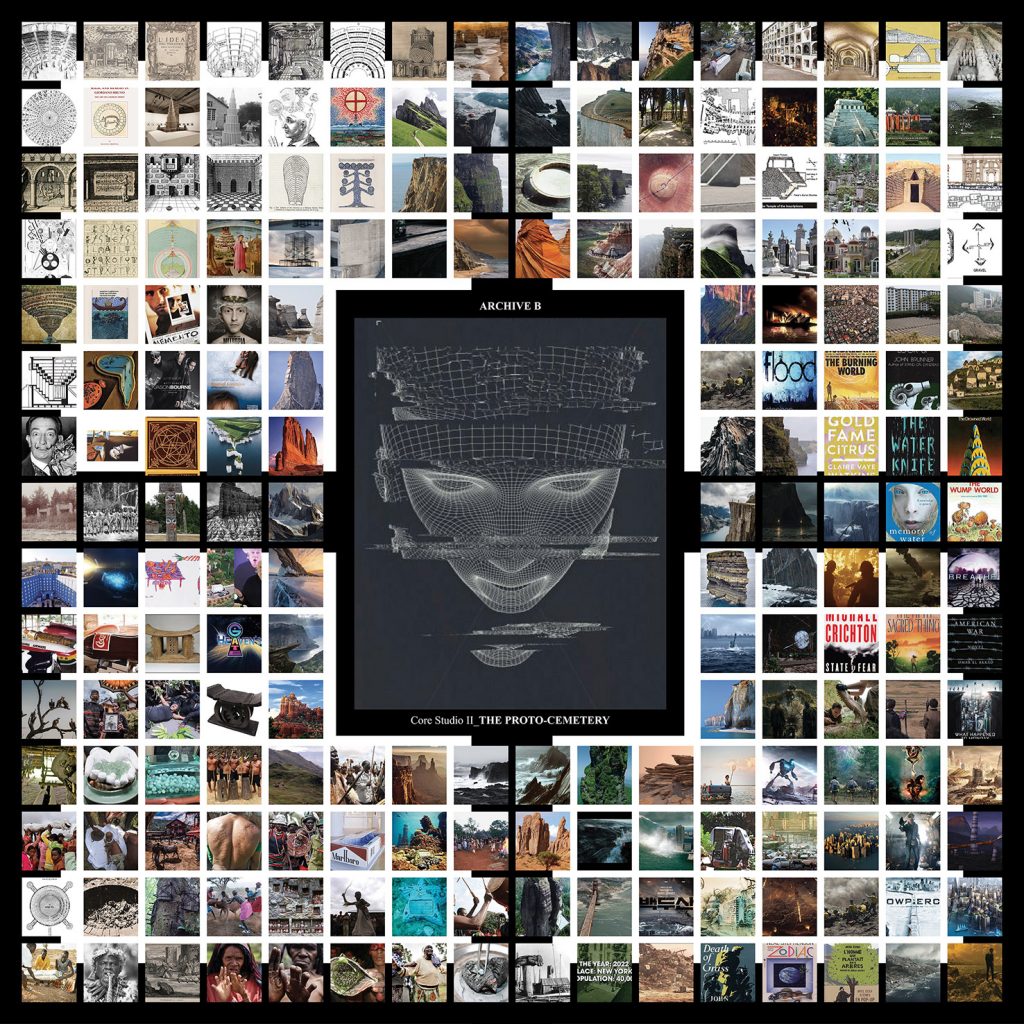

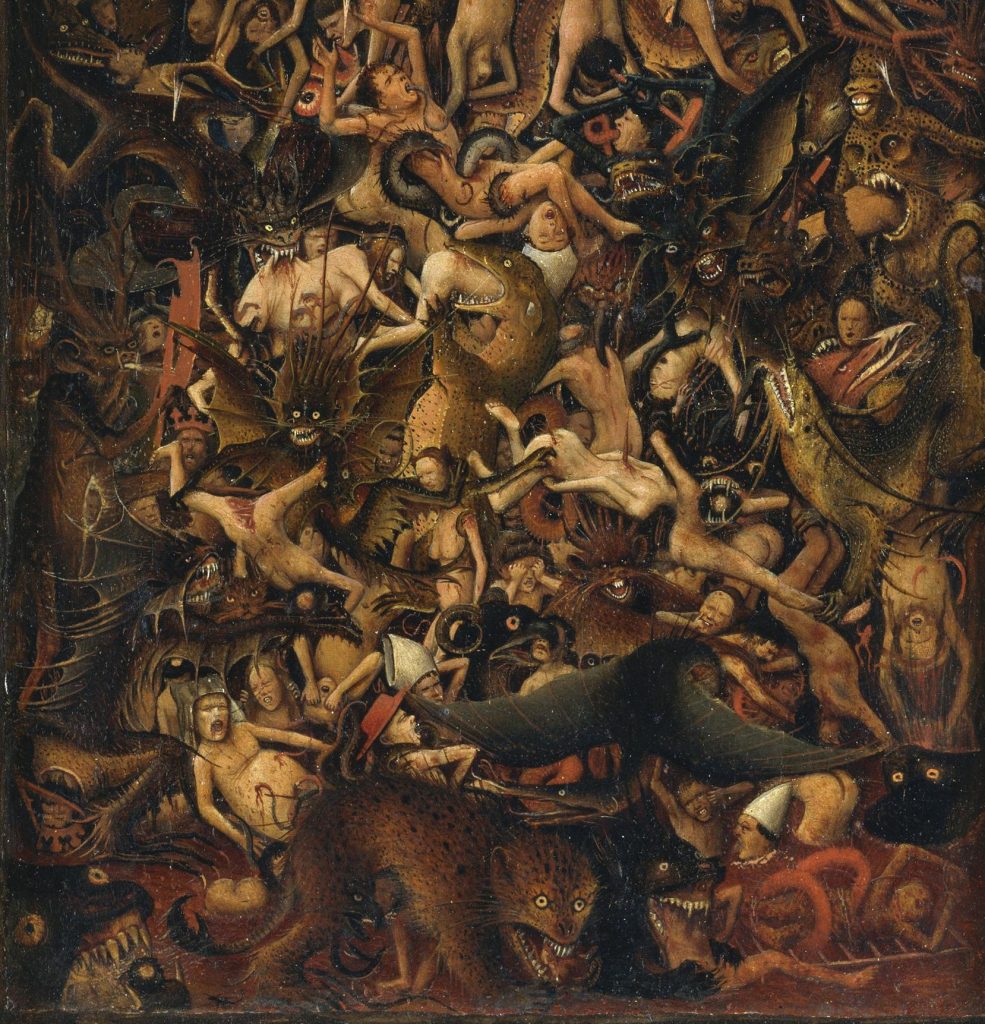
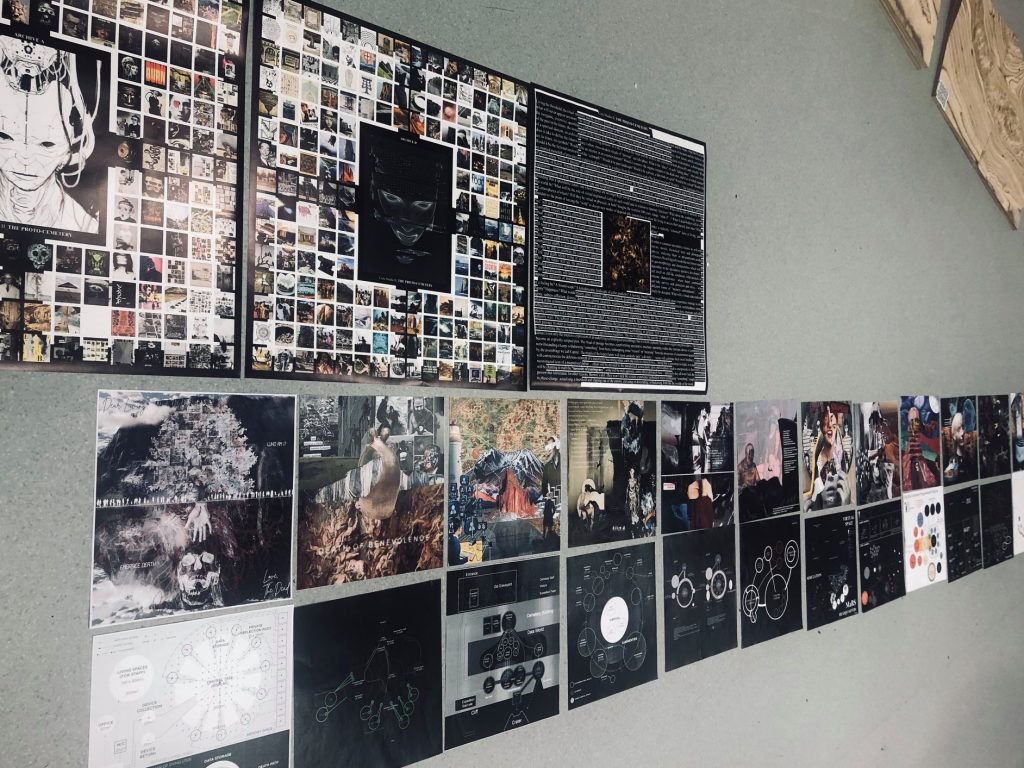
Snap of the 14 speculative collages and 14 diagramming exercises outlining (physical / digital) rituals of passage. 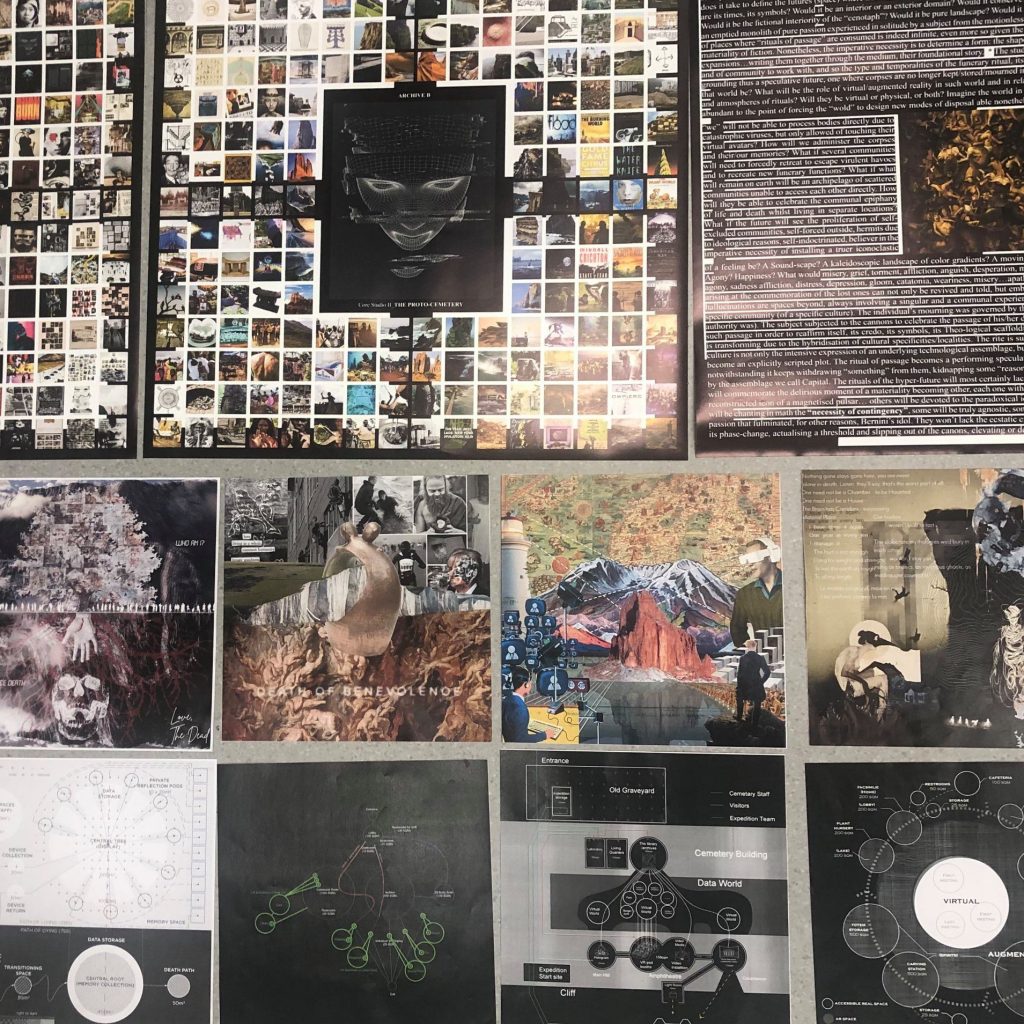
Snap of the 14 speculative collages and 14 diagramming exercises outlining (physical / digital) rituals of passage. 
Andrzej Żuławski – On The Silver Globe 
Andrzej Żuławski – On The Silver Globe
GUESTS:
CLARA OLÓRIZ
Clara is a PhD architect, tutor and practising architect. She graduated from the ETSA Universidad de Navarra and obtained her PhD on the relationship between architecture and technology focusing on industrialized systems of production at the ETSAUN and at the AA. Previously, she has worked for Foreign Office Architects and Arquitectos Cerouno. Currently, she teaches at the AALU masters program as a design tutor as well as at the ETSAUN. She is also co-directing the AA Visiting School ‘Computing Topos’ in Bilbao and the AA Research Cluster ‘Urban Prototypes.
JANE CHUA
Jane is a registered architect in the USA, and a RIBA chartered member. She holds a Masters in Architecture from Princeton University, and a Bachelor of Arts in Architecture and City Planning from the University of California, Berkeley. Prior to founding Plural, she worked in internationally renowned offices in New York, San Francisco, Tokyo, and Singapore, on a range of high-profile clients and award-winning, widely-published projects.
Jane was a Fellow of the Princeton University Graduate School. She has taught at Princeton University, and has served as a studio critic at UC Berkeley, Stanford University, Princeton University, National University of Singapore, and Academy of Art University. She is currently teaching at Singapore University of Technology and Design.
NANCY DINIZ
Nancy is a registered architect and educator practicing in New York City and London. Nancy is the Course Leader of the Masters in Biodesign at Central Saint Martins, University of the Arts London. She is the recipient of numerous grants and fellowships namely the 2016 NYSCA New York State Council on the Arts award sponsired by Storefront NY, MacDowell Colony, EYEBEAM, Seoul Art Space Geumcheon, Korea and The Foundation for Science and Technology, Portugal. Nancy is a member of The Design and Living Systems Lab at CSM UAL. She has been a guest and keynote speaker at inumerous events related with computational design and biomaterials namely at Frame Awards 2020, Frieze Academy, Royal Academy of Arts, Somerset House, London Design Festival 2019 and Pioneer Works NY. She has held academic positions in the US, China, UK, Italy and Portugal and was co-Director of the Institute for Advanced Architecture Catalonia (IaaC) New York Global Summer School between 2017 and 2019. She is author of the upcoming book ‘Unstable Matters – Designing with Living Organisms’.
MANU LUKSCH
Manu researches the effects of emerging technologies on daily life, social relations, urban space, and political structures. Her current focus is on corporate-governmental relationships and the social effects of predictive analytics in the algorithmic city. Her work is included in the Collection de Centre Pompidou, the BFI National Archive, and the Core Collection at the Academy of Motion Picture Arts & Sciences; she is a Resident Artist at Somerset House, and was formerly an Open Society Fellow and visiting Fellow at Goldsmiths, University of London. Awards include ZONTA Award – 65th Kurzfilmfest Oberhausen 2019; Open Media Award 2019; Best Feature – Moscow International Documentary Film Festival 2016, Elevate Artivism award 2015, M. v. Willemer Prize by Ars Electronica Centre and City of Linz.
PETER ORTNER
Peter is Assistant Professor in Architecture and Sustainable Design at the Singapore University of Technology and Design. His current research asks how we can build more sustainably and resiliently by taking urban metabolism data into account during the design process. Evidence-based design of cities and buildings for Urban Air Mobility, the growing presence of drones and air taxis, is another ongoing research interest. Peter’s doctoral research built on insights from critical data studies to elucidate the changing role of architecture and architect in complex, data-driven urban systems.
Peter received a PhD from EPFL where his doctoral thesis was nominated for the EPFL and City of Lausanne prizes. At EPFL Peter taught architecture studio with Media x Design Lab, a cross-disciplinary team of designers and computer scientists. He holds a Master’s in Architecture from Harvard University where he was recipient of the Faculty Design Award, and a Bachelor of Arts cum laude with distinction in architecture from Yale University.
Peter has practiced architecture internationally, working in the United States with SsD Architecture, Safdie Architects and SOM New York, and previously maintained an architectural practice in Geneva, Switzerland.
MICHAEL BUDIG
Michael is Assistant Professor in Architecture and Sustainable Design at the Singapore University of Technology and Design (SUTD). Before joining SUTD he was a senior researcher at the Singapore ETH Centre’s Future Cities Laboratory (FCL) from 2011 to 2014 and was leading a Singapore based research team for Gramazio & Kohler’s professorship for Architecture and Digital Fabrication (ETH Zurich). The project included PhD research, industry collaborations and design studios for Masters in Architecture students from ETH Zurich and NUS Singapore.
Prior to the activities at FCL Michael Budig was teaching and researching at Studio Hadid, University of Applied Arts Vienna, and the Institute for Experimental Architecture. Hochbau, University of Innsbruck. He is a registered architect (EU-wide, Austrian Chamber of Architects) and was principal at Moll Budig Architecture. Built projects include housing and industrial projects like a metal recycling company and soap production facilities, both located in Innsbruck (Austria). His main research focuses on parametric design, and digital fabrication and construction.
